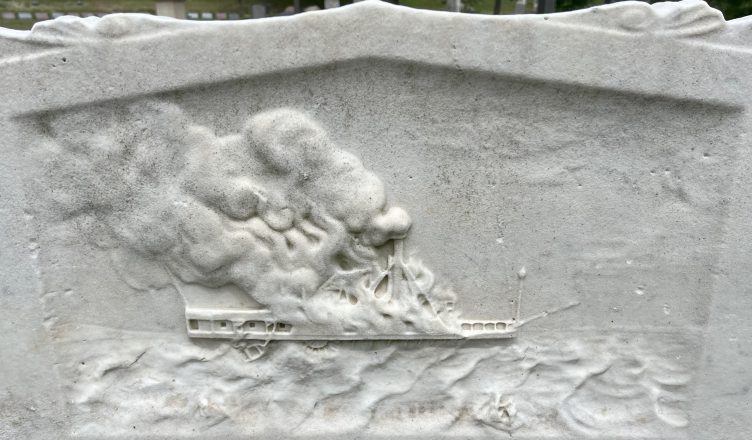New York’s Green-Wood Cemetery in the Bronx, with over 500,000 burials, is a veritable treasure trove of unique monuments. While there are many Green-Wood burials that resulted from maritime disasters I focused on the tombstones depicting ships below.
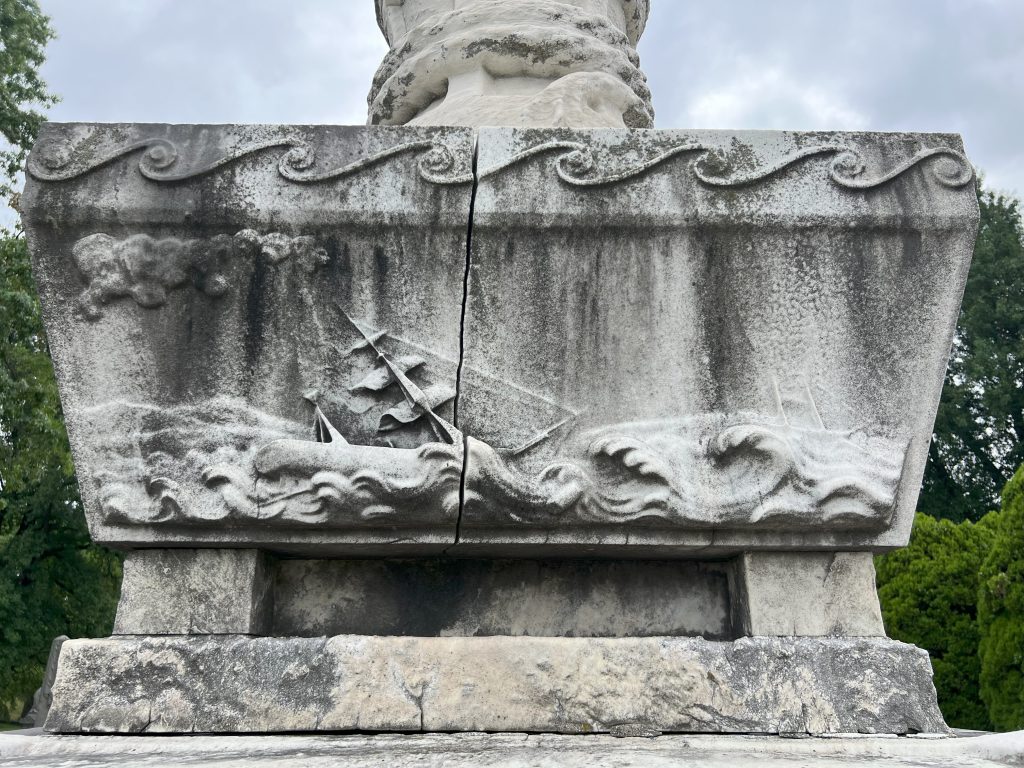
Packet Ship John Minturn
Captain Thomas Freeborn (1774-1846) died while trying to pilot the packet ship John Minturn to shore during a violent gale off the Jersey shore on February 15, 1846. The Pilot’s job was to guide ships into a particular harbor. At least nine ships and sixty lives were lost including thirty-eight people from the John Minturn and twenty-two from the other shipwrecks. The monument is located at the top of Battle Hill.
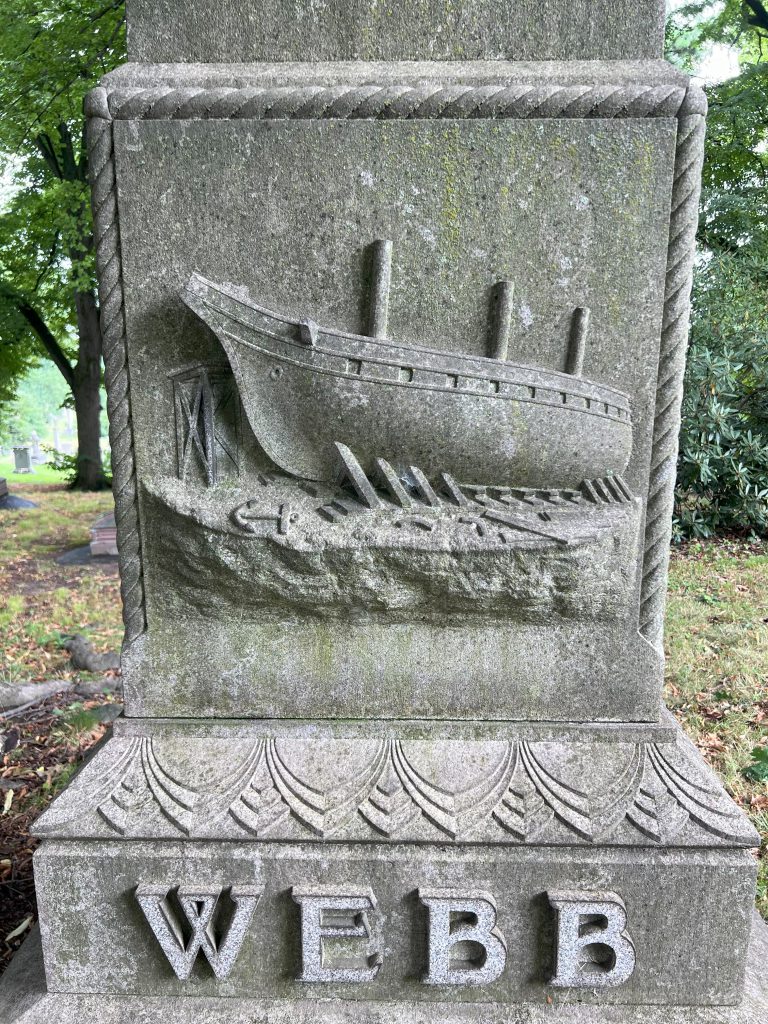
Eckford Webb (1825-1893)
Eckford Webb’s granite monument, depicting a ship under construction, honors his prestigious American shipbuilding heritage. His father, Isaac Webb, apprenticed under the legendary Scottish shipbuilder Henry Eckford, his son’s namesake. Eckford’s brother, William H. Webb, was regarded as the foremost naval architect of his generation.
Section 74, Lot 6189
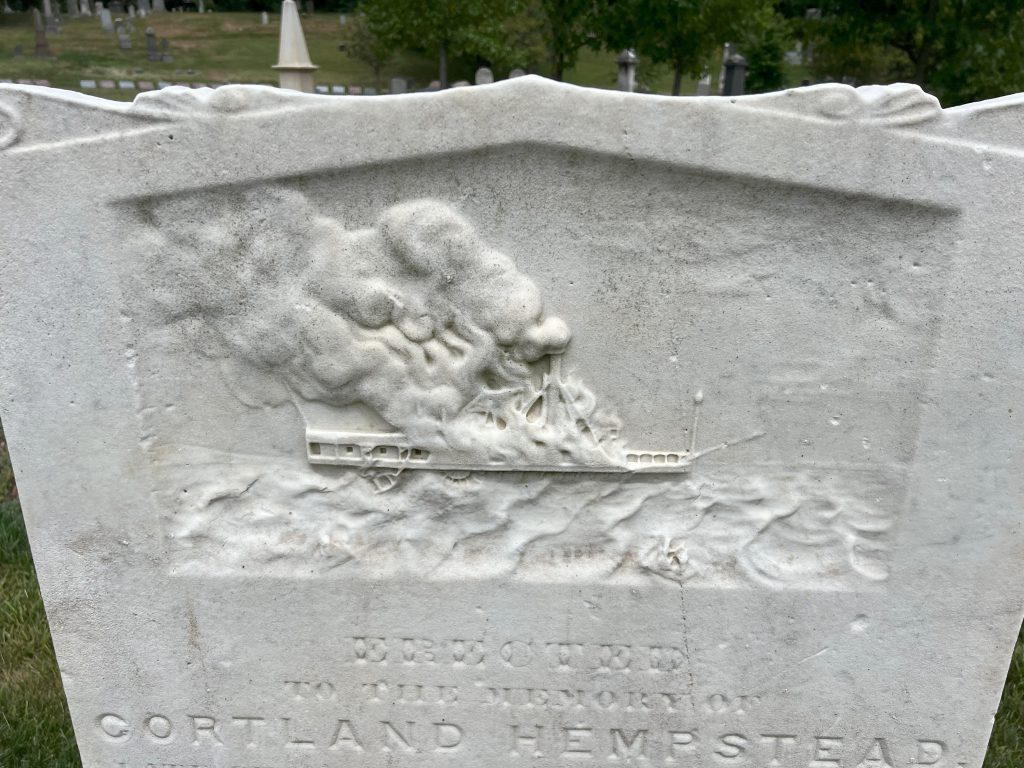
Cortland Hempstead (d. 1840),
Steamer Lexington
Over two hundred crew and passengers perished when the steamboat Lexington caught fire and ultimately sank in January of 1840. Sparks from the smoke pipe set fire to the large quantity of cotton on board. The lifeboat was thrown over, but caught the water wheel, and was lost. If you look closely at the tombstone, you will see the hanging lifeboat on the left. The captain and one other hung onto a bale of cotton for fifteen hours before being rescued. You can see on the bottom, right what appears to be people floating on a cotton bale.
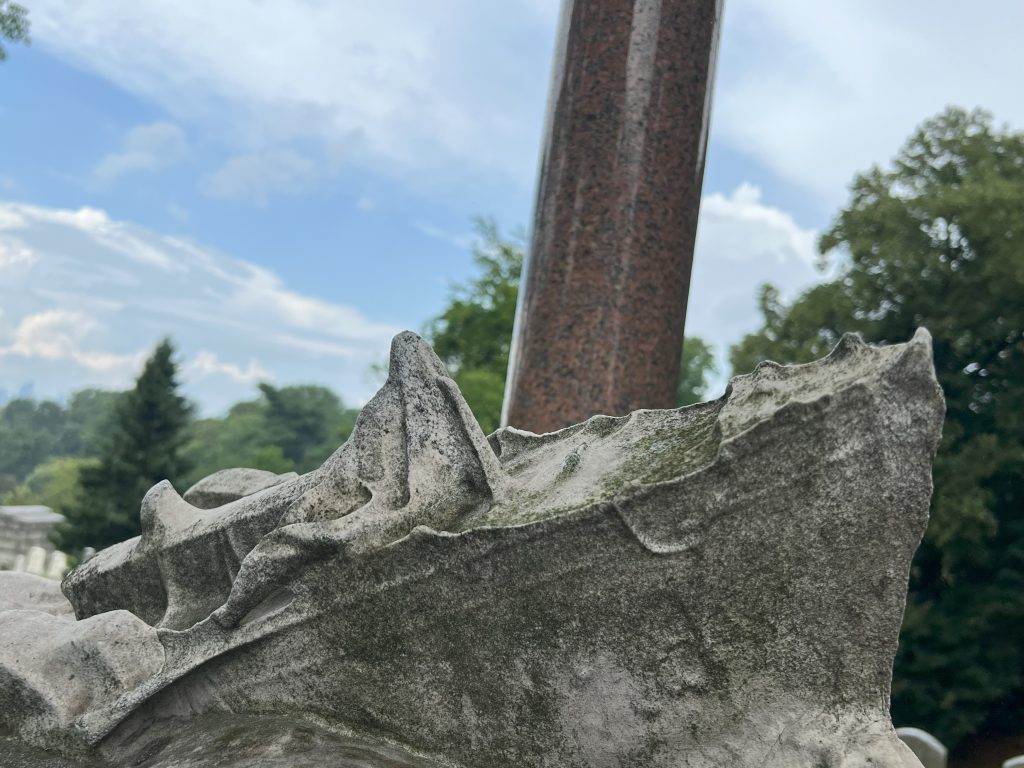
Steamship Arctic
The Arctic was believed to have been the finest steamship in the world, having been built without regard to cost, under the superintendence of the finest naval architects. According to the ship’s captain James Luce, the Arctic was struck by the steamship SS Vesta’s anchors which penetrated through the bows in a dense fog near Cape Race, Newfoundland. Only 32 of the 431 on board survived.
James Brown, principal financier of the Arctic’s line, lost six family members in the disaster. The Brown Family memorial, pictured at left, was erected to commemorate the lives lost. The Victorian monument with a gothic-style canopy covers a 3D model of the sinking steamer. Sculptor John Moffit’s name is inscribed on the base.
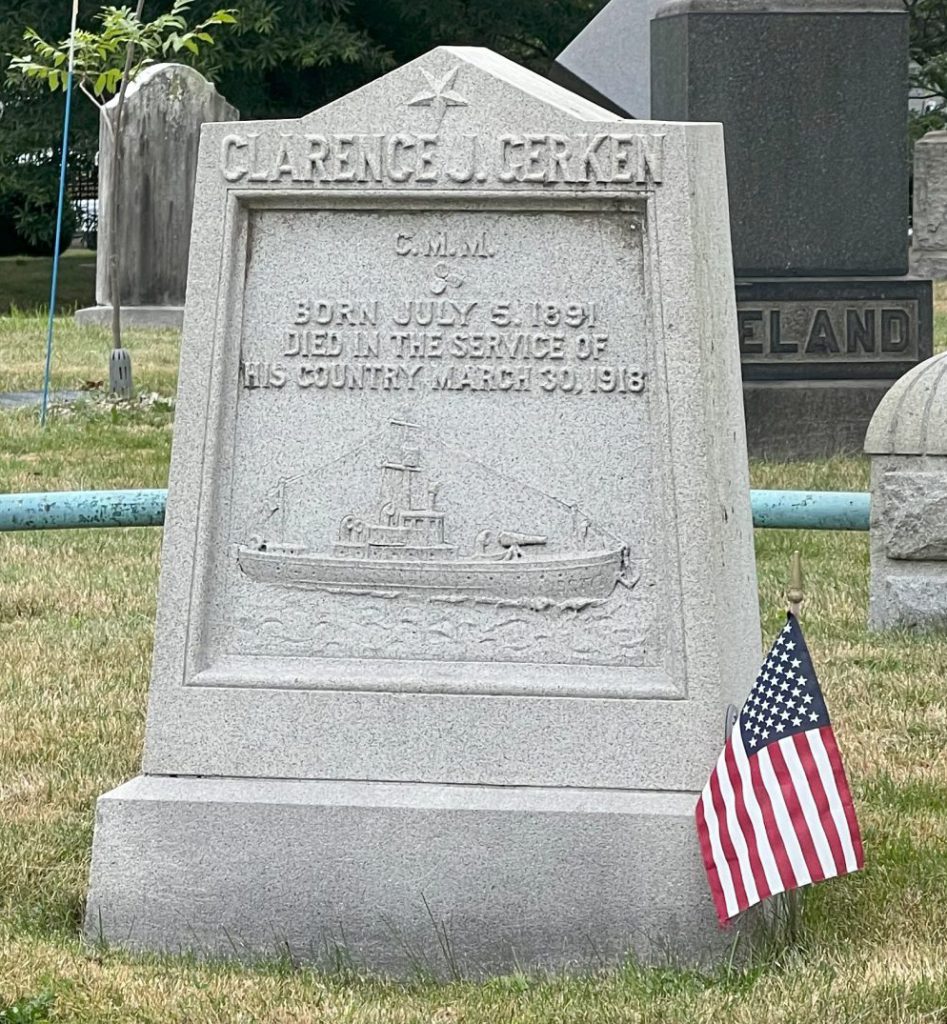
Clarence John Gerken (1891-1918)
Gerken was the chief machinist in the submarine chaser service of the U. S. Navy. Gerken died of pneumonia at the age of twenty-six before he was able fulfill his dream of “defending his country against undersea enemies.”
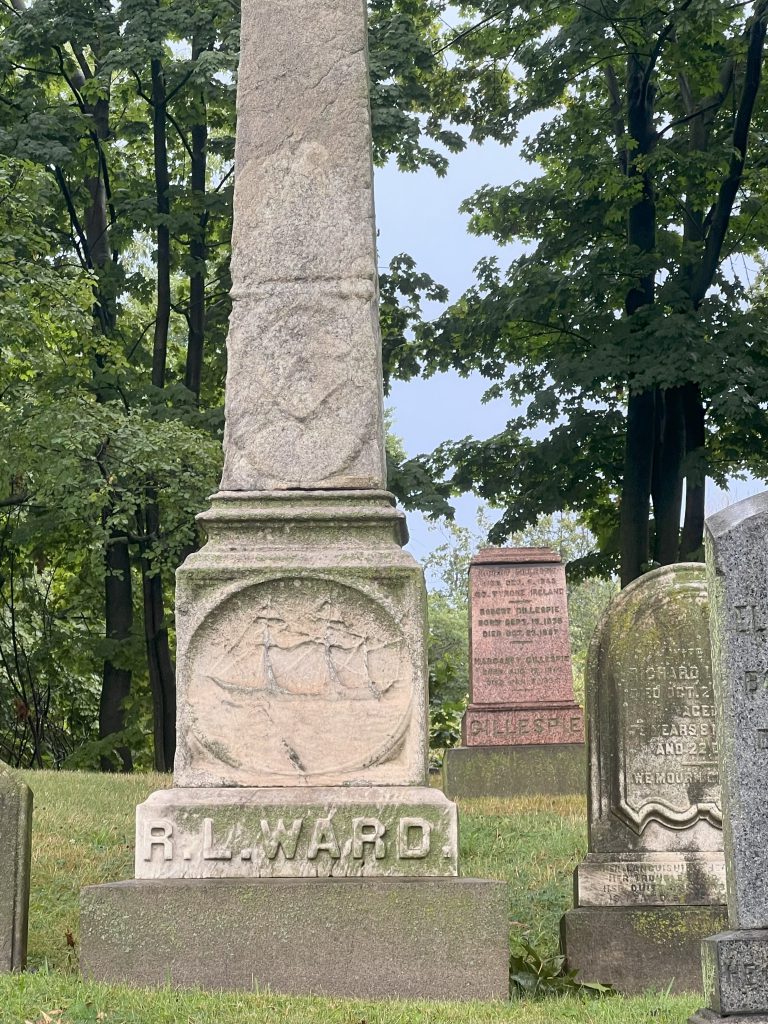
Capt. Richard L. Ward (d. 1858)
A member of the Marine Society, Captain Ward died at the age of 67. The Marine Society was formed in colonial days and is composed of seafarers, all of whom must be, or have been Captains or Officers of merchant vessels under the United States flag.
Lot 9670, Section 3
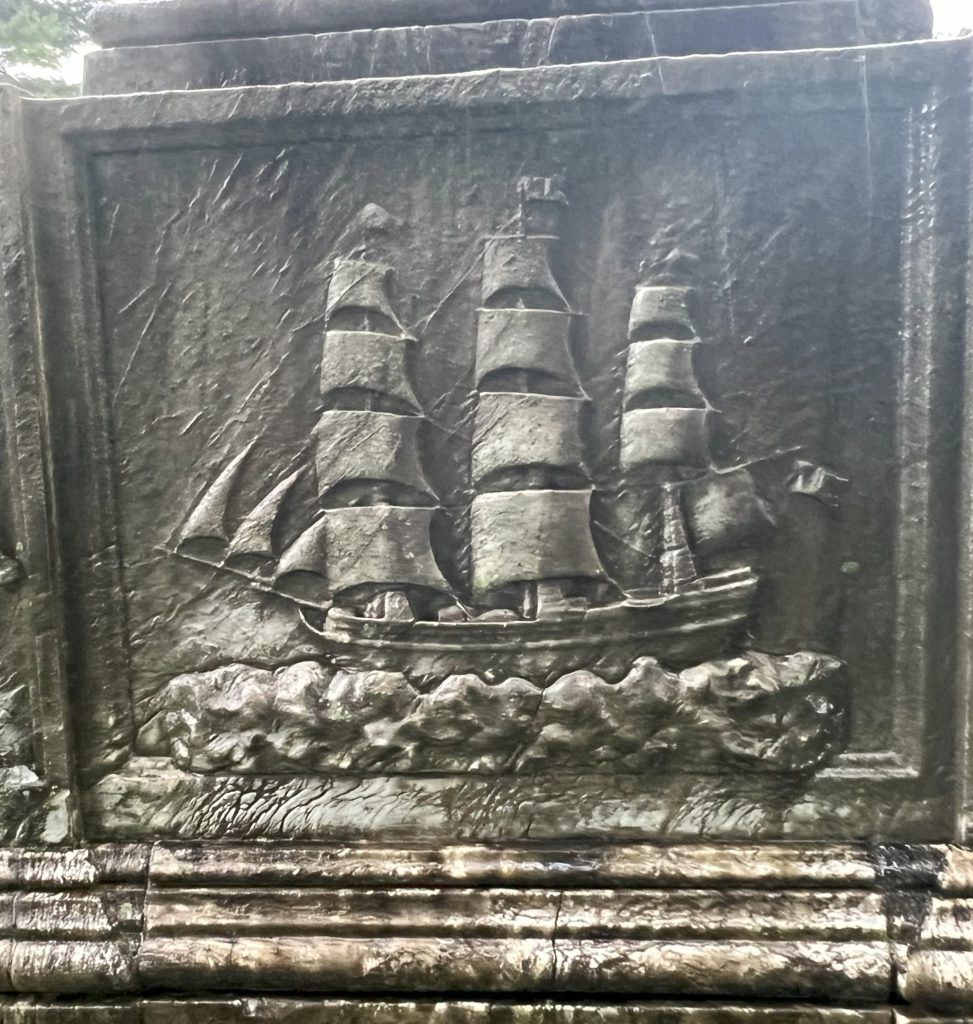
Menemon Sanford (1789-1852)
In the early 1830s, Captain Menemon Sanford and Cornelius Vanderbilt formed a steamship company in New Haven, CT. After their partnership ended, Sanford established the Sanford Independent Line, adding a new ship named after him in 1854.
The “Menemon Sanford” ended up on a reef off Key Largo in Florida. At the time, the Sanford was carrying 800 Union soldiers of the 156th New York Volunteers, part of a flotilla in the Banks Expedition enroute to New Orleans. No one died in the grounding, but a large amount of gear needed for the Union expedition up the Mississippi River was lost.
Section 43, Lot 1146
